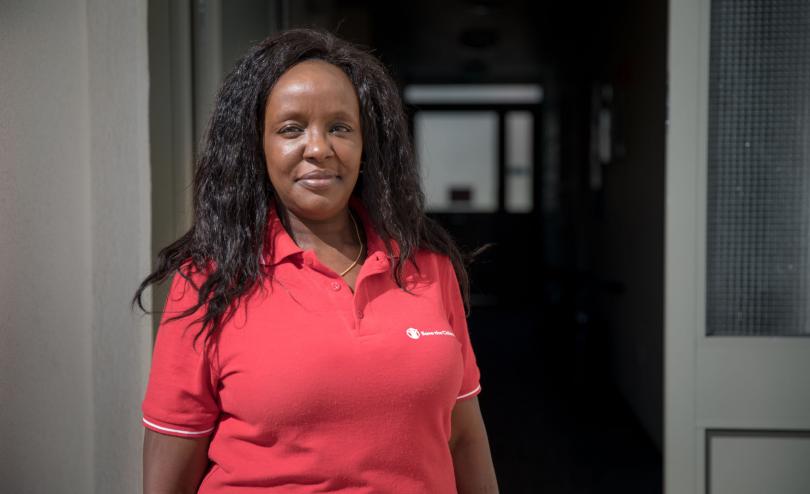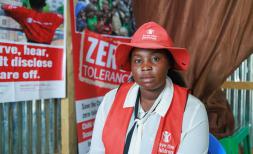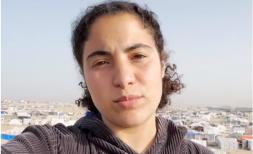Why is it important to invest in midwives?

Pictured above: Mary Muisyo Syethii, a nurse in Save the Children's COVID-19 isolation and treatment centre in Cox's Bazar, Bangladesh. Mary is part of Save the Children's Emergency Health Unit.
Today is International Day of the Midwife (IDM). It is a day to celebrate and to reflect on the impact midwives and midwifery can make on reducing maternal and newborn mortality, morbidity, stillbirths and on improving quality care for women and newborns. It is also a time to consider how COVID-19 has affected women, newborns and health workers as well as how this global pandemic highlights the need for increased investment in midwives.
Follow the Data: invest in midwives
The International Confederation of Midwives theme for IDM is “Follow the Data: Invest in Midwives”. The case for investment in midwives is strong. Based on a recent study, if midwifery interventions were scaled up to 95% coverage by 2035, 4.3 million maternal and newborn deaths could be averted each year. This would mean a 67% reduction in maternal deaths, a 64% reduction in neonatal deaths and 65% reduction in stillbirths. The vast majority of lives saved would be in low- and middle-income countries. The provision of midwifery services by midwives who are educated, trained, licenced and regulated is associated with efficient use of resources and cost effectiveness. However, the case for investing in midwives is not new – similar compelling data was released a decade ago. So why hasn’t more been achieved?
One reason may be related to the time and the investment needed to grow the midwifery workforce. There is a global shortage of midwives which is most acutely felt in Africa and South East Asia. Midwives make up only 20% of the global health workforce delivering essential maternal and newborn health care, however, midwives have the potential to meet 80% of all maternal and newborn health care needs.
Midwifery is on the agenda for this year’s World Health Assembly, where Member States will consider an updated report on Global Strategic Directions for Nursing and Midwifery for 2021–2025. The report emphasises the need:
To strengthen the capacity and quality of nursing and midwifery education,
To recruit and retain midwives where they are needed most,
To build leadership capacity and to optimise practice.
It is vital that member states support it and endorse the accompanying resolution.
We also need more girls and young women, especially those living in hard-to-reach areas or fragile settings supported to access and successfully complete midwifery training. As part of the Women for Health project in Nigeria, funded by UK Aid to increase the number of female health workers, particularly midwives in Northern Nigeria –we worked alongside partners with 24 health training institutions in six states. 23 of these institutions gained full accreditation and together they increased their intake of students by 256% and improved the quality of education and learning. Communities also changed their attitudes towards the education of women and state governments passed laws that committed them to support the training institutions. This is the kind of long-term investment that is needed to support change, improve access to and quality of midwifery education and, in the long run, save the lives of women and newborns.

Safia, 59, a Midwife in Gardo General Hospital, Somalia, with newborn baby Amin. Amin is just one of thousands of babies Safia has delivered.
The toll of COVID-19
We have seen how the coronavirus pandemic has severely impacted the health workforce and service provision. It has reinforced the need to protect and invest in all occupations – including midwives – engaged in preparedness and response, public health and essential health services. Midwives have been on the frontline of this response – at personal risk, to ensure ongoing access to services for women, girls, newborns and their families. The pandemic has worsened the existing global shortage of midwives, yet has illustrated the unique ways in which they can continue to provide care in challenging circumstances. It is often midwives who live in the communities they serve and who are well placed to provide individualised and family-centred care ensuring that access to essential care is continued even when hospitals are overwhelmed with COVID-19 patients.
In addition to the provision of essential maternity and reproductive health services, we must not forget that violence against women and girls becomes worse in every type of emergency, including the COVID 19 pandemic. Often referred to as the “shadow pandemic”, we have seen a global surge in cases of gender-based violence (GBV), and women and girls suffering. Midwives are in a unique position to help survivors of GBV, as they are often the first health providers to identify and recognise women effected by GBV, to provide treatment and if necessary, refer.
With reduced numbers of health workers available, increased stress due to lack of training, exhaustion, fear and an increased cost of sustaining essential maternal, newborn and reproductive health services due to COVID 19 adjustments, the personal toll on midwives and other health care providers has been significant.
Now is the time for us to say thank you to all health workers, to recognise and celebrate the tremendous work they do. It is also crucially the time for governments to make long-term, sustainable investments in midwifery, midwives and health care providers delivering essential maternal, newborn and reproductive health care in very difficult times to save the lives of new mothers and newborns.







